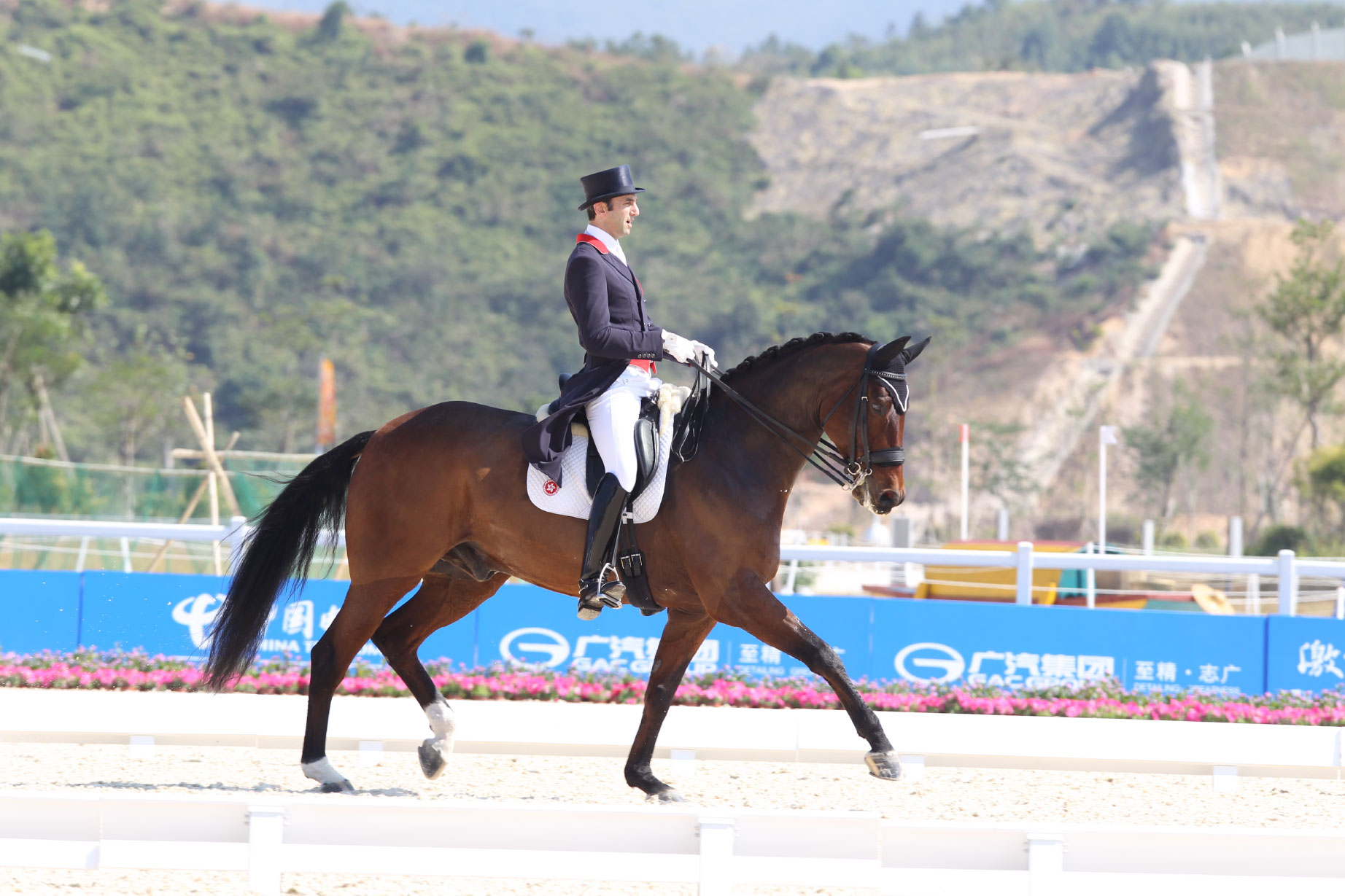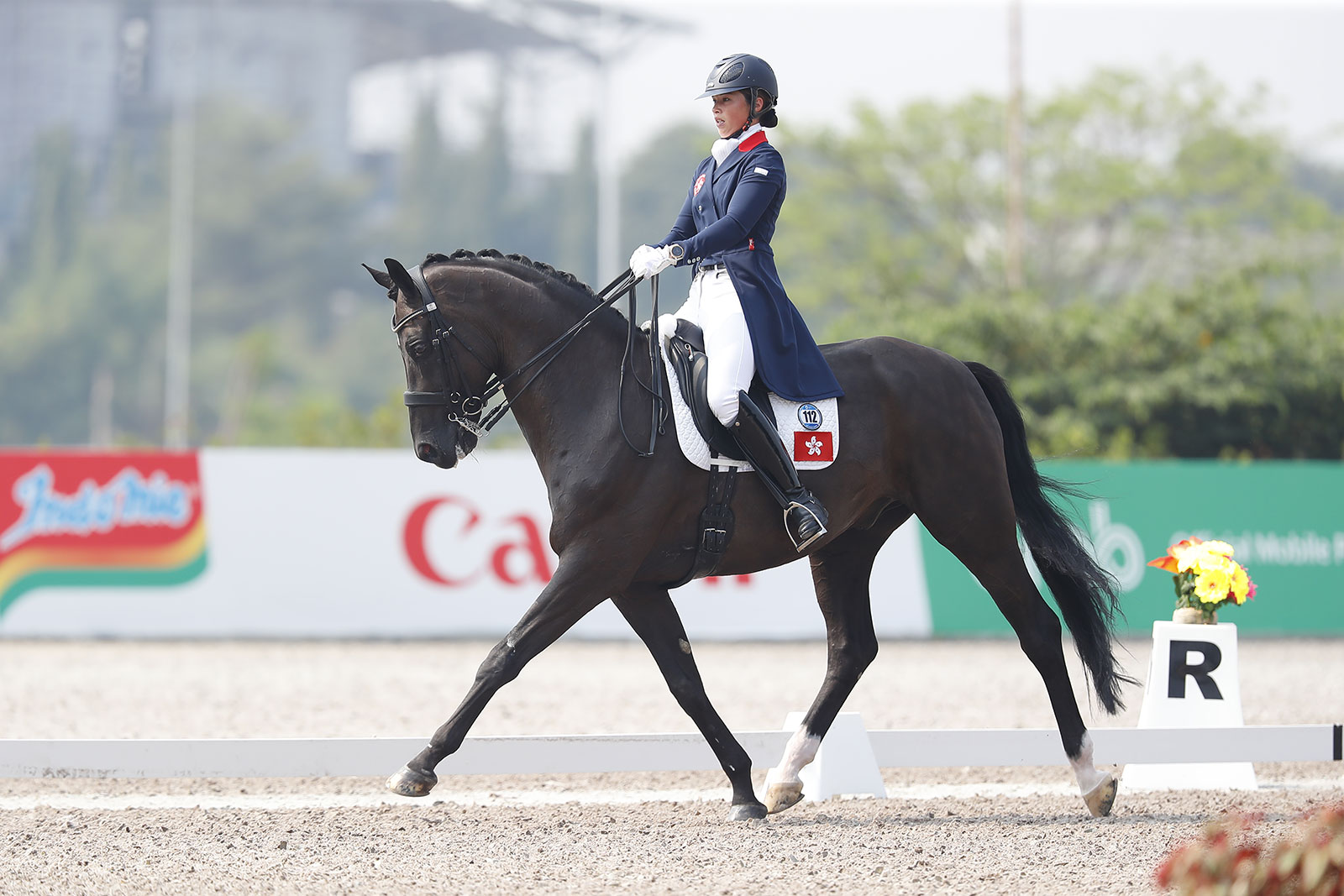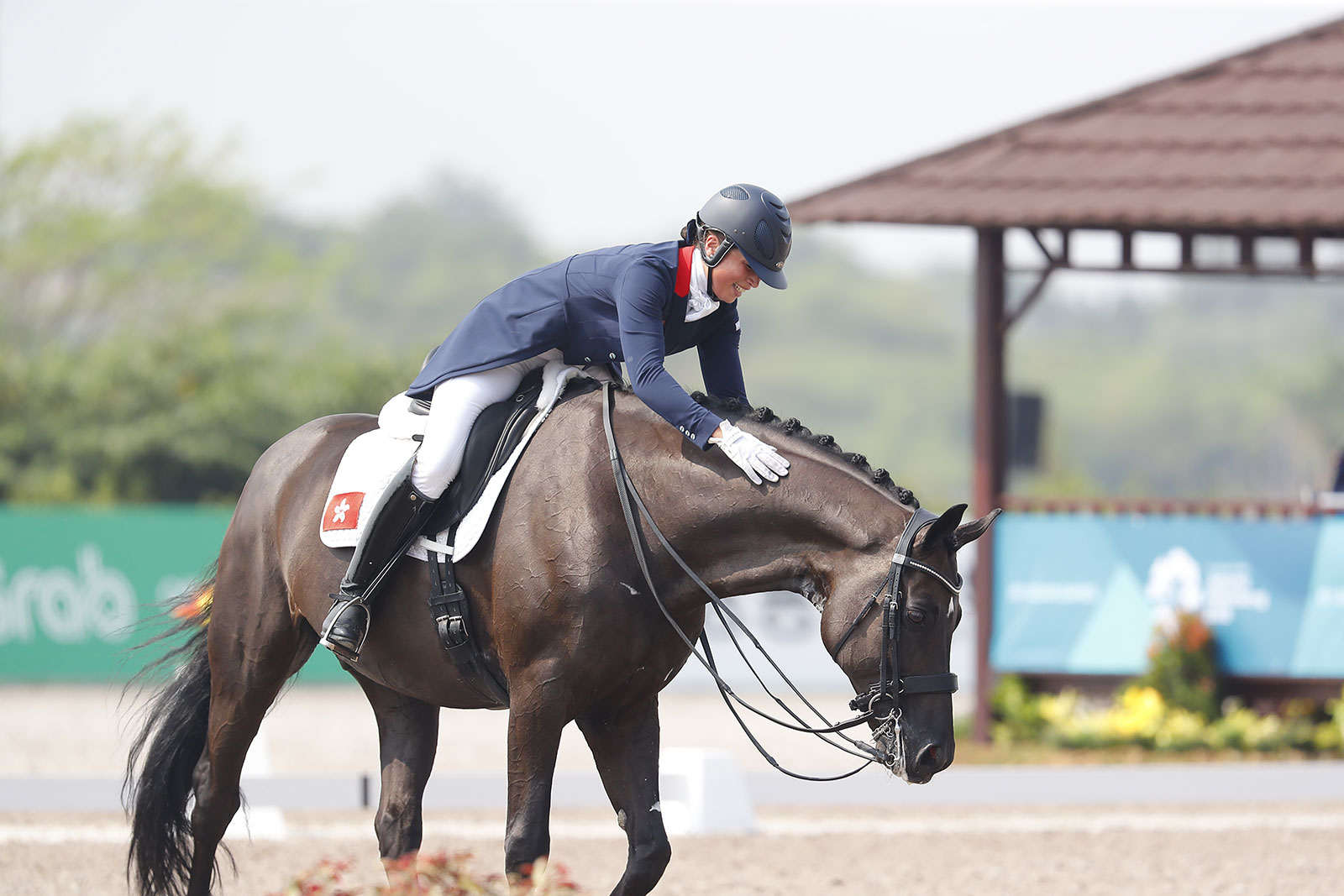Often described as “horses doing ballet”, dressage, which derives from a French word meaning “to train”, has changed little since the Renaissance. The horse performs a routine of beautifully choreographed movements in response to the rider’s subtle aids and signals. Dressage horses require years of training to be able to develop both their bodies and understanding.
In the dressage arena, there are alphabet letters marking specific locations. Entering at A, horse and rider move to different markers to perform the movements in accordance with the different tests. The judges normally sit at C and E, but in major international competitions there are also judges at the quarter line markers. It is not known who began the lettering system or why the arrangement was chosen, but these are now an intrinsic part of the sport of dressage.
There are two sizes of arena. The small arena measures 20m by 40m, and is used for the lower levels of dressage and for three-day eventing dressage. The letter markers around the outside edge, starting from the point of entry and moving clockwise, are A-K-E-H-C-M-B-F. Letters also mark locations in the middle of the arena: moving down the centre, they are D-X-G, with X in the centre.
The larger standard arena is 20m by 60m, and is used for both dressage and eventing. There is a greater number of letter markers: A-K-V-E-S-H-C-M-R-B-P-F, which can increase the complexity of the test. The letters in the middle of the arena are D-L-X-I-G, with X marking the centre.
In the Olympic Games, dressage is conducted over three rounds. In the first two, horse and rider perform a test in walk, trot and canter including movements known as passage, pirouette and piaffe. The third round is freestyle, with routines individually choreographed and performed to music. Scoring is conducted by five judges who evaluate how well the horse executes the movements.
In Hong Kong, the dressage tests run from Preliminary all the way through to Prix St George level. As the levels increase, so does the degree of difficulty. Marks are awarded per movement and then added together to give an overall percentage. Most competitors in Hong Kong compete at levels from Preliminary to Advanced. The horse and rider combination with highest percentage score will win the class.
The HKEF Dressage Horse of the Year Award honours the best performing Dressage horse-rider combination of the season. Points are accumulated for each combination in all HKEF graded and FEI competitions held throughout the season.
Below please enjoy the performance by Jacqueline Siu, Hong Kong’s highest-level dressage rider, and the stunning horse, Jockey Club Fuerst on Tour. Here they are competing at Intermediate I level in the Freestyle to Music round at the 13th China National Games Tianjin, 2017.
In Hong Kong local competitions, the highest level of achievement of riders is currently the FEI Senior II level. In the video, Samantha Chan and Luciano 259 are competing at the level.
For under 16s, the fundamental level for FEI competition is the FEI Youth level. Velvet Lung with Taimawr Gwyn are in the arena performing the test.











